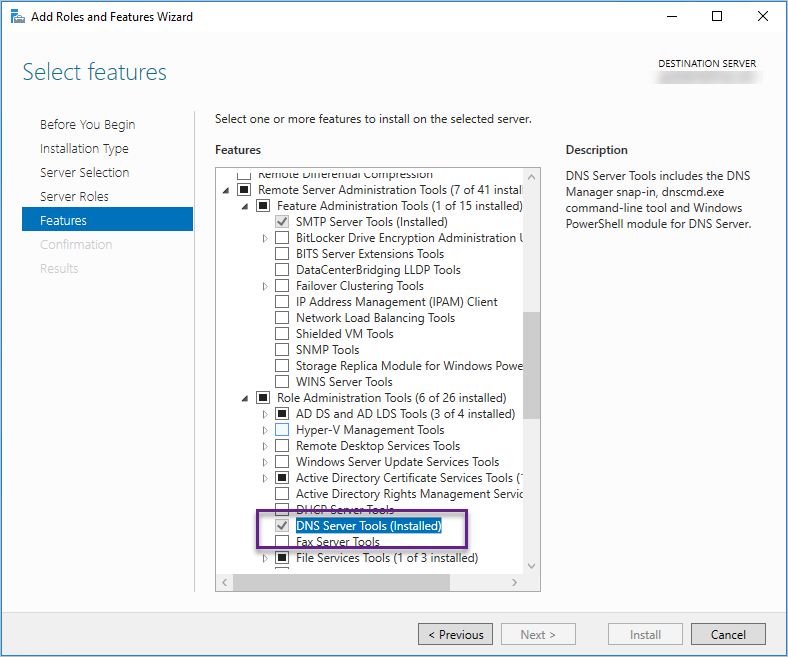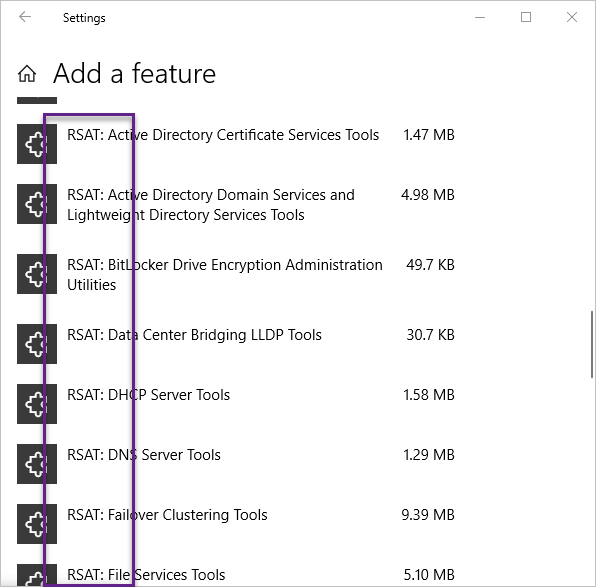PowerShell - Zone 별로 DNS 레코드 유형 정보 조회
아래와 같은 글이 있군요. ^^
Extract DNS Records to CSV with PowerShell
; https://chentiangemalc.wordpress.com/2018/10/17/extract-dns-records-to-csv-with-powershell/
github를 통해 공개한 스크립트를 보면,
Get-AllDnsResourceRecords.ps1
; https://github.com/chentiangemalc/PowerShellScripts/blob/master/Get-AllDnsResourceRecords.ps1
[CmdletBinding()]
param(
[Parameter(Position=0)]
[String]$DNSServer)
$Zones = @(Get-DnsServerZone -ComputerName $DNSServer)
$Data = @()
ForEach ($Zone in $Zones) {
($Zone | Get-DnsServerResourceRecord -ComputerName $DNSServer) | `
Select-Object -Property `
@{Label="Zone Name";expression={( $Zone.ZoneName )}},`
DistinguishedName,`
HostName,`
RecordClass,`
RecordType,`
Timestamp,`
TimeToLive,`
@{label="Data";expression={
$r = $_.RecordData
switch ($_.RecordType)
{
"A" { $r.IPv4Address.IPAddressToString }
"NS" { $r.NameServer }
"SOA" {
"ExpireLimit=$($r.ExpireLimit);"+
"MinimumTimeToLive=$($r.MinimumTimeToLive);"+
"PrimaryServer=$($r.PrimaryServer);"+
"RefreshInterval=$($r.RefreshInterval);"+
"ResponsiblePerson=$($r.ResponsiblePerson);"+
"RetryDelay=$($r.RetryDelay);"+
"SerialNumber=$($r.SerialNumber)"
}
"CNAME" { $r.HostNameAlias }
"SRV"{
"DomainName=$($r.DomainName);"+
"Port=$($r.Port);"+
"Priority=$($r.Priority);"+
"Weight=$($r.Weight)"
}
"AAAA" { $r.IPv6Address.IPAddressToString }
"PTR" { $r.PtrDomainName }
"MX" {
"MailExchange=$($r.MailExchange);"+
"Prefreence=$($r.Preference)"
}
"TXT" { $r.DescriptiveText }
Default { "Unsupported Record Type" }
}}
}
}
다운로드해 다음과 같이 실행할 수 있습니다.
& "c:\temp\ps_dns.ps1" -DnsServer 8.8.8.8
그런데 실제로 실행해 보면 이런 오류가 발생합니다.
PS C:\temp> & "C:\temp\ps_dns.ps1" -DnsServer 8.8.8.8
Get-DnsServerZone : Failed to enumerate zones from the server 8.8.8.8.
At C:\temp\ps_dns.ps1:44 char:12
+ $Zones = @(Get-DnsServerZone -ComputerName $DNSServer)
+ ~~~~~~~~~~~~~~~~~~~~~~~~~~~~~~~~~~~~~~~~~~
+ CategoryInfo : NotSpecified: (8.8.8.8:root/Microsoft/...S_DnsServerZone) [Get-DnsServerZone], CimException
+ FullyQualifiedErrorId : WIN32 1722,Get-DnsServerZone
Win32 에러 코드가 1722면 "The RPC server is unavailable"입니다. 그러니까, 해당 글의 예제와는 달리 구글 쪽의 DNS 서버 조회는 할 수 없는 것입니다. (실제로 에러 메시지를 보면 "8.8.8.8:root/Microsoft/...S_DnsServerZone"이라는 마이크로소프트 쪽 Namespace 정보가 나옵니다.)
따라서 위의 명령은 Microsoft DNS 서버의 정보를 알아내는데 사용할 수 있습니다. 아래는 그에 대한 출력 예제입니다.
PS C:\Users> $ScriptBlockContent =
{
$myArg = 'mydnsserver'
C:\temp\ps_dns.ps1 -DNSServer $myArg
}
PS C:\Users> Invoke-Command -ScriptBlock $ScriptBlockContent
Zone Name : _msdcs.testad.com
DistinguishedName : DC=@,DC=_msdcs.testad.com,cn=MicrosoftDNS,DC=ForestDnsZones,DC=testad,DC=com
HostName : @
RecordClass : IN
RecordType : NS
Timestamp :
TimeToLive : 01:00:00
Data : testpdc.testad.com.
Zone Name : _msdcs.testad.com
DistinguishedName : DC=@,DC=_msdcs.testad.com,cn=MicrosoftDNS,DC=ForestDnsZones,DC=testad,DC=com
HostName : @
RecordClass : IN
RecordType : NS
Timestamp :
TimeToLive : 01:00:00
Data : testpdc4.testad.com.
...[생략]...
Zone Name : testad.com
DistinguishedName : DC=@,DC=testad.com,cn=MicrosoftDNS,DC=DomainDnsZones,DC=testad,DC=com
HostName : @
RecordClass : IN
RecordType : NS
Timestamp :
TimeToLive : 01:00:00
Data : testpdc4.testad.com.
Zone Name : testad.com
DistinguishedName : DC=@,DC=testad.com,cn=MicrosoftDNS,DC=DomainDnsZones,DC=testad,DC=com
HostName : @
RecordClass : IN
RecordType : NS
Timestamp :
TimeToLive : 01:00:00
Data : testpdc.testad.com.
...[생략]...
참고로, 본문의 스크립트에서 사용한 Get-DnsServerZone 명령어 자체가 실행이 안 되는 경우가 많을 것입니다.
PS C:\Users> Get-DnsServerZone
Get-DnsServerZone : The term 'Get-DnsServerZone' is not recognized as the name of a cmdlet, function, script file, or operable program. Check the spelling of the name, or if a path was included, verify that the path is correct and try again.
At line:1 char:1
+ Get-DnsServerZone
+ ~~~~~~~~~~~~~~~~~
+ CategoryInfo : ObjectNotFound: (Get-DnsServerZone:String) [], CommandNotFoundException
+ FullyQualifiedErrorId : CommandNotFoundException
이런 경우, dnsserver 모듈을 import 해 보면 다음과 같은 결과가 나옵니다.
PS C:\Users> Import-Module dnsserver
Import-Module : The specified module 'dnsserver' was not loaded because no valid module file was found in any module directory.
At line:1 char:1
+ Import-Module dnsserver
+ ~~~~~~~~~~~~~~~~~~~~~~~
+ CategoryInfo : ResourceUnavailable: (dnsserver:String) [Import-Module], FileNotFoundException
+ FullyQualifiedErrorId : Modules_ModuleNotFound,Microsoft.PowerShell.Commands.ImportModuleCommand
"
Extract DNS Records to CSV with PowerShell" 글의 덧글에 보면 Windows 10과 Server 2016에 내장되어 있다고 하는데 실제로는 DNS 관련 구성 요소가 설치된 경우에만 유효합니다. 설치 방법은, 다음과 같이 "Add Roles and Features Wizard"에서 "Remote Server Administration Tools" / "Role AdministrationTools" 범주에 있는 "DNS Server Tools"를 선택, 설치하면 됩니다.

참고로 윈도우 10에는 이에 해당하는 구성 요소가 없습니다. 대신 별도로 다음의 링크에서 다운로드할 수 있습니다.
Remote Server Administration Tools for Windows 10
; https://www.microsoft.com/en-us/download/details.aspx?id=45520
주의할 것은, 위의 링크에서 제공하는 RSAT은 Windows 10의 1709, 1803 버전 용입니다. 이번에 릴리스한 1807 버전의 경우 다음의 경고문에 써진 것처럼,
IMPORTANT: Starting with Windows 10 October 2018 Update, RSAT is included as a set of "Features on Demand" in Windows 10 itself. See "Install Instructions" below for details, and "Additional Information" for recommendations and troubleshooting. RSAT lets IT admins manage Windows Server roles and features from a Windows 10 PC.
"Settings" / "Apps & features" / "Manage optional features" 패널에서 "Add a feature" 버튼을 통해 다음과 같이 개별 RSAT 구성 요소를 설치할 수 있습니다.

[이 글에 대해서 여러분들과 의견을 공유하고 싶습니다. 틀리거나 미흡한 부분 또는 의문 사항이 있으시면 언제든 댓글 남겨주십시오.]